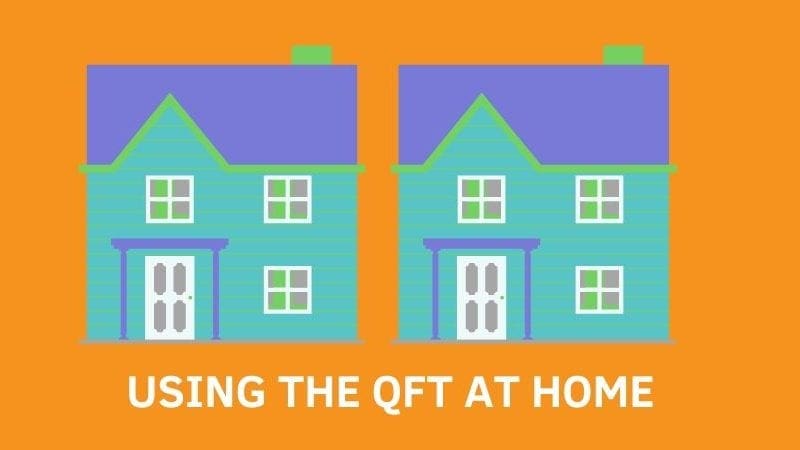The Question Formulation Technique, or QFT, can be a resource for helping kids stay curious and engaged in deep learning and thinking at home.
The novel idea in using the QFT is that we, as a teacher or parent, simply present a prompt, or Question Focus, for the child to start asking questions about. A Question Focus can be almost anything — an image, a statement, an experience — as long as it is not one of your questions. It is different from us asking questions to stimulate their thinking. It’s a simple change, but a profoundly important one. Something magical happens when, instead of following our questions, children get to ask their own.
Through asking questions, kids of all ages can identify what they want to learn more about. They can dig more deeply into what they read or view, investigate what puzzles them, and let us know what they don’t understand or need help with. Moreover, questions open incredible opportunities to connect with children and gain insight into how their minds work.
For a quick overview of all the steps of the QFT process, review the Right Question Institute’s resources page. The institute created the QFT. Get started with this one-page guide.
Here are eight easy ways to use the QFT to keep children thinking deeply and curiously at home:
1) Reading
Before reading a book, ask your child to generate questions about the front cover image and title. What questions do they have about it? As you read, pause at moments that answer or address some of those questions. If your child is reading independently, ask them to let you know what they find out and what they’re still wondering about. See if they have ideas about what they might read next to answer some lingering questions or if they have new questions after they finish the book.
2) Having fun outside
If you can take your children to a nature preserve, hiking area, or beach, consider having them record a few questions before they head out. As a Question Focus, you might give them a map of the route you will take or a piece of data or information about the types of plants or animals they will see. For example, “Seagulls crack shells open in order to eat.” Have them keep an eye out for answers as they walk and observe.
3) In the kitchen
Cooking can make children curious. Kids might ask questions like, Why do some pancakes fluff up while others flatten out? What’s the difference between baking powder and baking soda? What’s the best way to make vegan cheese at home? See what questions your children might have about science in the kitchen. Consider setting up a real life food-based experiment (for example, pancake batter that rests for 10 minutes versus pancake batter that’s immediately spooned into the pan) or even a blind taste test. Have children record their questions and then work to research them online or in cookbooks. Punctuate with frequent hand washing.
4) Understanding what they see in the news
Help children make sense of the moment we are in. You might give older students a provocative piece of data or image (for example, a link to a “flatten the curve” graph) from a trusted news source and have them ask questions to understand social distancing and disease transmission. For extra credit, give children a piece of data, image, or information from an unreliable source. See if you can work together to recognize the markers of unreliable information and name some questions we might ask to determine the validity of a source.
5) Setting goals
Ask older children to do some goal and expectation-setting for their time out of school. You might use a Question Focus statement like, “Making the most of our time at home over the next several weeks,” or, “Setting personal goals for this month.” Have kids plan some actions they can take to meet their goals for their time at home.
6) Connect with previous generations
Find a primary source from the Spanish influenza of 1918 to help understand the history of global pandemics and the important role of ordinary people.
7) Empathy and social connections
Engage children in thinking about the deep inequities and substantial challenges many people and families are facing during this time. Consider using a Question Focus prompt like, “Ways we can help our community in the next two months” or, “Some kids and families will have a harder time than we will” or, “Staying connected to our friends without seeing them.” Answer the questions you can and find a couple articles children might read. Support kids in finding ways to make their voices heard and identifying small ways to help classmates, neighbors, community businesses, friends, and other families. For example, we’ve seen reports of children writing cards to residents in assisted living facilities and participating in virtual town hall meetings with elected officials.
8) Document this moment in history
Download the free StoryCorps app on your phone or tablet. StoryCorps is an organization that records conversations and stories and archives them at the Library of Congress. They also share stories on National Public Radio. Take this opportunity to help children connect with an older relative or friend through interviewing them. Your Question Focus might be, “Questions you have about Grandma’s life” or a particular anecdote from Grandma’s life. Or, have children develop questions around “the story of my birth” and have them interview a parent. You can encourage your child to prioritize “three questions you most want to know” or “ three questions that might open up a lot of discussion.” After your child generates questions to ask this relative or friend, help them to record a phone interview and submit it to StoryCorps. Maybe they’ll even make it to the radio!
